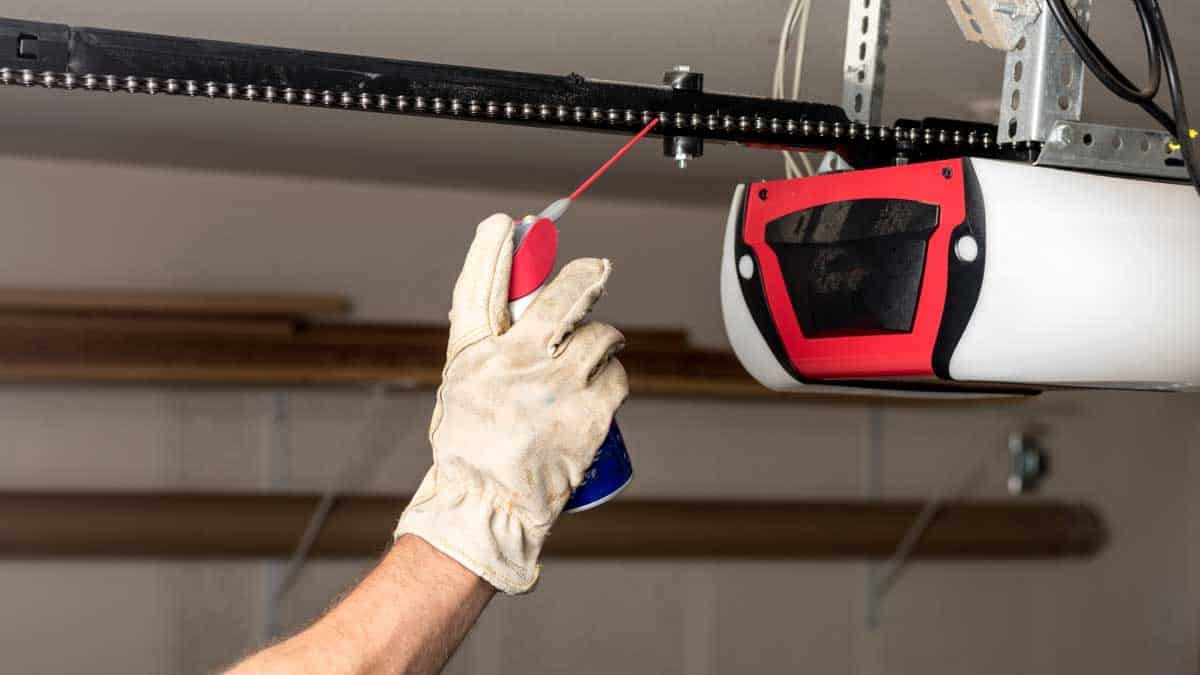Step-by-Step Instructions for Attending To Usual Garage Door Repair Works at Home
Navigating common garage door repairs can be a manageable task for property owners with the best method. As we explore each repair process, you'll uncover practical techniques that can boost the longevity of your garage door, establishing the stage for a more efficient home upkeep routine.
Troubleshooting a Stuck Garage Door
Experiencing a stuck garage door can be discouraging, specifically when it interrupts your everyday routine. Repairing this problem requires a systematic strategy to determine the underlying cause. Begin by evaluating the tracks for any type of debris or blockages. Dirt, leaves, or also little objects can restrain the door's motion. If any international materials exist, clear them away carefully.
Next, take a look at the rollers and hinges. Try to find signs of wear or damage, as these parts are vital for smooth operation. Lubing these components with a silicone-based spray can enhance performance and minimize friction.
Furthermore, examine the positioning of the tracks. Misaligned tracks can cause the door to jam. If you discover an imbalance, delicately touch the tracks back into position utilizing a rubber mallet.
Finally, make certain that the garage door opener is functioning correctly. Listen for any type of unusual noises or failure to respond. If the opener is malfunctioning, getting in touch with the manufacturer's instructions or getting in touch with an expert might be needed. By complying with these repairing actions, you can properly resolve a stuck garage door and recover its capability.

Dealing With Noisy Garage Door Openers
A loud garage door opener can be a significant nuisance, interrupting the peace of your home and suggesting potential mechanical issues. Addressing this problem promptly can enhance both the functionality of the opener and the convenience of your home.
First, identify the resource of the sound. Common causes consist of loosened equipment, worn rollers, or lack of lubrication. Begin by checking the mounting brackets and screws; tighten any type of loose components to reduce rattling. Next, examine the rollers for wear or damages. If they show up split or used, think about replacing them with nylon rollers, which tend to operate even more silently.
Lubrication is vital for a smooth operation. Use a silicone-based lubricant on the moving parts, consisting of rollers, joints, and tracks. Stay clear of making use of grease, as it can draw in dirt and particles, leading to additional problems.

Fixing Broken Springs
Damaged garage door springtimes can jeopardize the whole system, making the door unusable and positioning safety and security risks. These springs are crucial for reversing the weight of the garage door, making its procedure smooth and reliable. When a spring breaks, it can result in the door dropping suddenly or becoming stuck, creating possible hazards for individuals.
To fix busted springtimes, first, make certain safety by detaching the garage door opener and safeguarding the door in the closed position. Next, determine the kind of spring you haveâEUR" torsion or extensionâEUR" as the repair work approaches differ. For torsion springs, carefully unwind the stress making use of appropriate tools, ensuring he said to use security goggles and gloves. If managing extension springs, use safety cords to stop injury from abrupt launch.
Ensure all elements are securely attached and reconsider the door's balance by manually lifting it halfway. Reconnect the garage door opener and conduct a test to guarantee smooth operation.
Aligning Misaligned Tracks
Proper placement of garage door tracks is vital for the effective and risk-free procedure of the door. Misaligned tracks can cause the door to bind, making it difficult to open or shut, and may result in additional damages in time. To address this concern, initially, make sure the door is fully near avoid any kind of injury during the fixing procedure.
Utilize a degree to examine if the tracks are vertically straightened. If they are not, carefully touch the track with a rubber club to straighten it.
Next, examine the brackets that hold the tracks in position. If they are loose, tighten the screws with an outlet wrench. For tracks that are considerably misaligned, it may be essential to remove the track from its brackets, adjust its position, and after that reattach it firmly.

Replacing Damaged Garage Door Panels
When faced with harmed garage door panels, it's crucial to address the issue immediately to preserve the door's functionality and visual charm. The very first step in changing harmed panels is to analyze the degree of the damages. If the damages is limited to a couple of panels, substitute is commonly a lot more economical than replacing the entire door.
Begin by purchasing substitute panels that match your existing garage door. Guarantee you acquire the right size and style, as garage doors come in numerous designs and materials. To remove the damaged panels, disconnect the door from the opener and raise it into a totally open setting. Utilize an outlet wrench to get rid of the bolts securing the panels.
After installment, reconnect the garage door opener and examination look at here the door to ensure it runs smoothly. Regular upkeep and prompt repairs can extend the life of your garage door, guaranteeing click here now its continued functionality and aesthetic appeal.
Final Thought
Dealing with concerns such as stuck doors, noisy openers, broken springs, misaligned tracks, and damaged panels makes certain optimal performance and prolongs the lifespan of the garage door system. Embracing these techniques not only enhances the ease of utilizing a garage door yet also adds to total home safety and security and safety and security.